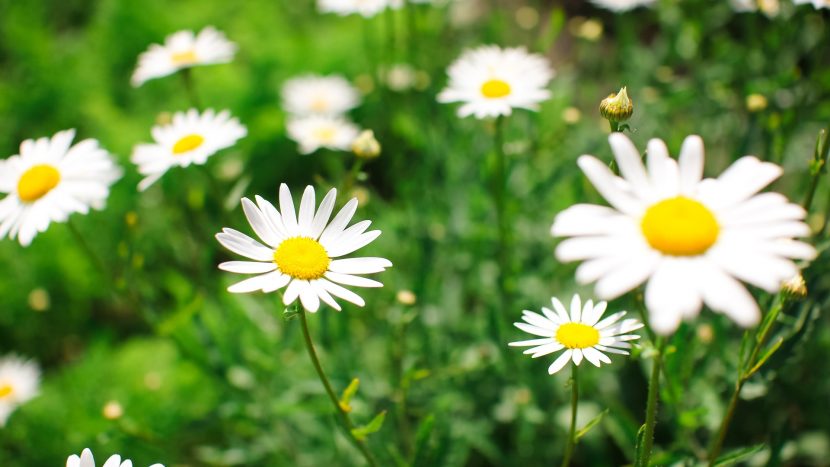Herbal tea can be very calming, invigorating and of course, healing. These days, however, a lot of major herbal tea brands that have become staples in homes and health food stores unfortunately have added ingredients like natural flavors and soy lecithin. The good news is, there’s several easy and delicious options for homemade herbal tea!
Mint
Mint is the most obvious and a lovely option for tea. Tea made with mint leaves can help with upset stomachs and other digestive issues, and it is also very calming and refreshing. It grows best in well-drained soil and shade, and it crawls so it’s a great ground cover. It also repels bests so it’s perfect around your garden beds.
Lemon Balm
Lemon balm makes for a delicious tea with a lovely flavor, and it’s very medicinal too. Perfect for treating colds, it is a wonderful natural sedative for restless children or patients. It’s an easy and low-maintenance herb, that can get very big very quickly, so it’s perfect for tea as you’ll want to cut it back often.
Dandelion
Dandelion tea, either from the roots, leaves or flowers, is wonderfully medicinal and also quite flavorful. The root even can be used to make caffeine-free, liver-supporting coffee. Odds are you already have dandelion growing in your lawn or pasture, but it can be easily grown in gardens as well.
Chamomile
Chamomile is a classic herb tea that’s a lovely bedtime treat. It is wonderfully medicinal, benefiting chest colds, inflammation, eczema and allergic reactions. Best grown outdoors in the ground, it can be a lovely option for mass planting and the pretty little flowers are a great landscaping choice as well.
These are just a few options for herbal tea-there’s many more out there! Home-grown and home-brewed tea is the best you’ll get, for taste and for health, so consider some of these wonderful tea herbs today!
If you liked that, you might also like:

9 thoughts on “Easiest Herbs to Grow for Tea”
I would love to grow my own tea. However, my favorite tea is black tea. I don’t know what plant I need to grow for that. Can you help me?
The same tea leaf that make Green tea makes black tea. FROM SCRATCH BUBBLE MILK TEA BOBA
How do I grow black tea and green tea? Can you help me with these?
Nitpicker that I am, if you are going to publish an article on beverages, I feel you should use the correct terminology. Technically, the only beverage that is correctly called “tea” is what’s made from camellia sinensis — yes, the same plant we grow in our gardens to give us beautiful camellia blossoms. (The second word, “sinensis” refers to China.)
To answer Teresa Odom and Debra Cherney, green and black tea, as well as white tea, all come from camellia sinensis. The least mature leaves are harvested and dried to become “white” tea, which has the mildest flavor. Mature leaves are harvested to become green tea when dried, but if they are allowed to ferment (and I do not know the process for fermentation), they become black tea. This is what the Chinese produce. Whether we would be successful in getting a palatable product from the camellia plant if we tried to dry the leaves here, I cannot say. Just as good wine comes from grapes that take on characteristics from the soils in which they are grown, good tea production may require certain conditions of soil and/or climate to give best results.
To get back to the original nit for this comment, since “tea” technically only refers to beverages made with some version of camellia sinensis, what do we call all the others? All those decoctions made with various herbs, including the four given in this story are correctly categorized as tisane.
Since most of the world, however, has adopted the term “herb ‘tea’,” I can forgive your title, but it would have been nice if the article made the distinction between “tea” and “tisane.”
Along the same lines, “coffee” is coffee and comes from the coffee plant. It is true that the roots of the dandelion, when dried and ground, can be used for a similar beverage, as can chickory, which is often mixed with coffee in the South (esp. New Orleans). But dandelion can only be a coffee SUBSTITUTE, not coffee itself.
I know rose hips and passion flowers can be used as tea, and we used to dry berries and make a tea with them. Also, sage, oregano, thyme and rosemary can be used – in fact, most kitchen herbs can be used for tea. Just depends on your taste.
When is the best time to plant these? Thank you
Most of the herbs mentioned grow in the wild and can be harvested by hand. You just need to know what they look like and when to pick them.
Chicory and burdock also occur in the wild, and the roasted roots make excellent coffee substitutes.
The Root of the Sassafras plant can, ALSO, be used to make tea!!! when cleaned, dried, ground; brewed , it has the flavor of Root Beer…Best served, ICED, with a little sugar!!! DELICIOUS!!!
Many Super Markets carry prepared Sassafras tea in their tea section.